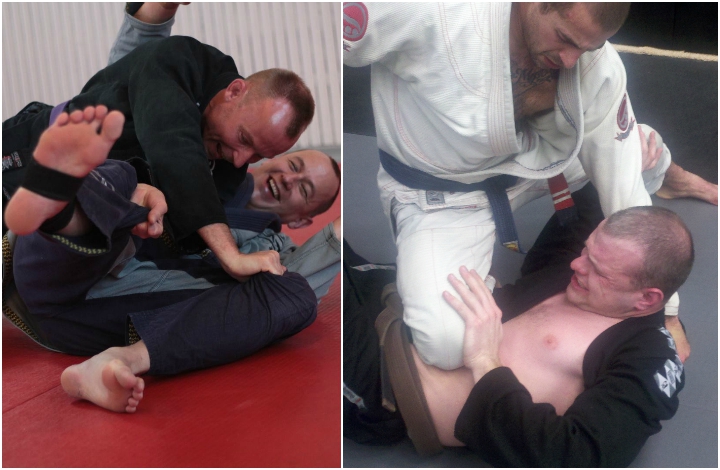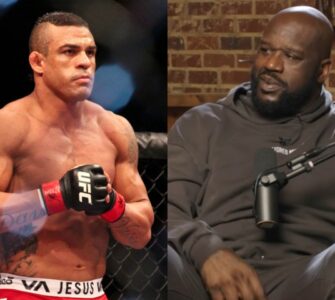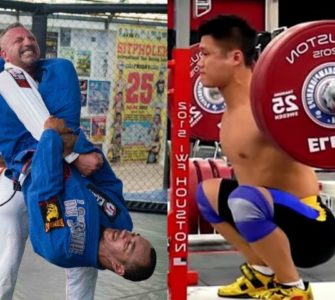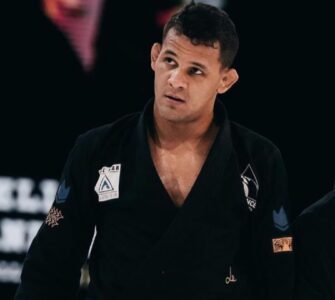Every culture whether big or small, isolated or encompassing, all have their myths. The Greeks had their gods, each with a particular skill set or characteristic that set them apart from common man. Sailors told tales of the Kraken, a sea monster that would lay in wait and destroy entire armadas, leaving only drift wood as evidence of their existence. Brazilian jiu jitsu has light rolling.The tales are inspiring, oftentimes described as “flow rolling” where players go “half-speed” with “light resistance” to enable their partner ample opportunity to train techniques that would otherwise be defended with fervor.
Higher belts tell tales of light rolling while lower belts listen intently and do their best to imagine what it would feel like to actually experience such a phenomenon. As the lower belts listen, their minds will wander to the fantasy being depicted: an easily escaped mount with a perfectly executed elbow escape, bridge or hip bump. A loosely applied cross face allowing for unimpeded movement and a knee on belly position that is more of an idea than an actual threat. The players are said to move flawlessly, water-like and with grace; carefully transferring from one position to the next, contemplating and countering with ease. These rolls are said to develop a certain skill set, a kinesthetic conditioning, where sensitivity is gained to body movements and intentions; feeling the movement before it actually occurs, anticipating instead of reacting. These rounds are oftentimes free from true aggression. Players acquiescing positions for the sake of fluidity instead of holding steadfast to gain advantage over mistakes or oversights.These are campfire stories, made to illicit intrigue and wonder, a form of ritual: myths. Myths that will continue to be believed by a small percentage of the population and practiced by even fewer.
The benefits of light rolling described above, albeit embellished, will allow for player development overtime but it will come at a cost. The cost may not be noticed initially while training with fellow “light rollers” but because light rolling is a practice based solely on perception, there will be a time when differing perspectives intersect on the mat. It is in these moments that the concepts behind light rolling may become more of burden than a blessing. While light rolling may be able to hone a certain skill set under the right conditions. Those conditions are abnormal and at best, fabricated. Creating a world that is full of possibilities and yet just as limiting.
Conversely, hard rolling or as I like to call it, reality, allows for real time reactions and real time pressure. The escapes from mount will be shut down, often, and you will be forced to misdirect your opponent in order to gain any advantage. The end move may be an elbow escape but it may be the last move executed after several bridge attempts and hip bumps. This of course, while you opponent is straddling your chest, hooks in, attacking. The cross face being applied now is not gentle and that feeling on your cheek is your opponent’s gi, burning your face. Forcing you to look away, twisting your spine just enough to make you vulnerable to another attack. Thankfully though, your face is given a break but now there is a knee being driven through your belly, into the floor, while your opponent attempts to fold the rest of your body against the centralized pressure. This isn’t to say you are being abused by your opponent, no, you are being hardened. In his mind the expectation, the request, is that you will do the same to him when the opportunity presents itself.
Hard rolling constantly forcing one to acknowledge that your opponent may know all the same techniques and tricks that you are privy to. In fact, he may know more, he might be faster, stronger, and more aggressive. Even if these things are all false, the forecast is the same: sweep, pass, submit. Seize every opportunity to make your training partner better. Apply pressure that solicits the occasional fart; audible proof that you are doing something right and maintain that throughout the round. Hard rolling creates an appreciation for space and an obsession with exploiting it. An obsession that stems from the fact that space is a commodity and a scarce one at that; one that is earned, never given and taken back as quickly as it is offered.
The argument as to which method is more beneficial is a sensitive topic. Personally, I prefer the latter, the grind. While light rolling is fun and will allow for a new view of movement, it reminds me of training wheels. Never allowing you to fail completely. Always letting you feel as though you are secure. Hard rolling is riding that same bike downhill with no hands. The margin for error is thin and once crossed will leave a lasting impression. Either way, train.
Written by Jason Bright of Genesis Jiu-Jitsu


















